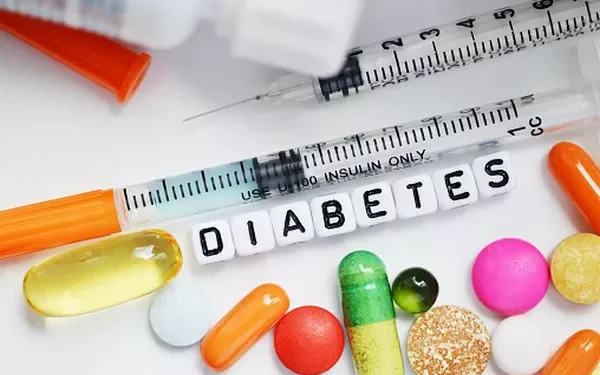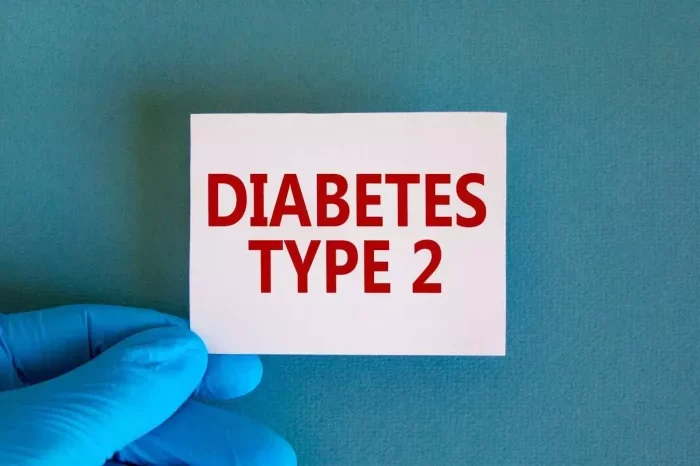Type 2 diabetes (T2D) continues to be a significant health concern globally, with millions of individuals affected by this chronic condition. Over the years, the medical community has made considerable progress in understanding and managing T2D, resulting in the development of various medications designed to control blood sugar levels, improve insulin sensitivity, and prevent complications associated with the disease. The emergence of new medications provides hope for better disease management and improved quality of life for patients. This article delves into the latest advancement in T2D treatment, focusing on the newest medication that promises to revolutionize diabetes care.
Understanding Type 2 Diabetes
Pathophysiology of Type 2 Diabetes
Type 2 diabetes is characterized by insulin resistance and an eventual decline in insulin production by the pancreatic beta cells. Insulin is a crucial hormone that regulates glucose uptake by cells, ensuring stable blood sugar levels. In T2D, the body’s cells become less responsive to insulin, leading to elevated blood glucose levels. Over time, the pancreas cannot compensate with increased insulin production, resulting in chronic hyperglycemia.
Complications of Type 2 Diabetes
If left unmanaged, T2D can lead to a range of complications, including cardiovascular disease, neuropathy, retinopathy, nephropathy, and an increased risk of infections. Effective management is essential to prevent these complications and maintain overall health and well-being.
Evolution of Type 2 Diabetes Medications
Historical Overview
The treatment landscape for T2D has evolved significantly over the decades. Initially, management strategies focused on lifestyle modifications such as diet and exercise. As the understanding of the disease grew, various classes of medications were developed:
- Sulfonylureas: These drugs increase insulin production by the pancreas.
- Biguanides: Metformin, the most well-known biguanide, improves insulin sensitivity and reduces glucose production in the liver.
- Thiazolidinediones (TZDs): These enhance insulin sensitivity in peripheral tissues.
- DPP-4 Inhibitors: These prolong the action of incretin hormones, which increase insulin secretion and decrease glucagon levels.
- GLP-1 Receptor Agonists: These mimic incretin hormones, enhancing insulin secretion, reducing glucagon secretion, and promoting satiety.
- SGLT2 Inhibitors: These promote glucose excretion in the urine by inhibiting glucose reabsorption in the kidneys.
Recent Developments
In recent years, there has been an explosion of new treatments, driven by a better understanding of the disease and advances in pharmaceutical technology. Notably, GLP-1 receptor agonists and SGLT2 inhibitors have been at the forefront, offering benefits beyond glucose control, such as cardiovascular protection and weight loss.
The Newest Type 2 Diabetes Medication: Tirzepatide
Introduction to Tirzepatide
Tirzepatide, a novel medication developed by Eli Lilly, represents the latest advancement in T2D treatment. Approved by the FDA in 2022 under the brand name Mounjaro, tirzepatide is a once-weekly injectable medication. It is a dual glucose-dependent insulinotropic polypeptide (GIP) and GLP-1 receptor agonist, a unique mechanism that sets it apart from existing treatments.
Mechanism of Action
Tirzepatide’s dual agonist activity targets both GIP and GLP-1 receptors. GIP and GLP-1 are incretin hormones that play essential roles in glucose homeostasis:
- GLP-1 Receptor Agonism: GLP-1 increases insulin secretion, decreases glucagon secretion, slows gastric emptying, and promotes satiety.
- GIP Receptor Agonism: GIP enhances insulin secretion and has potential effects on fat metabolism and appetite regulation.
By targeting both receptors, tirzepatide offers a comprehensive approach to managing T2D, addressing multiple facets of the disease, including glycemic control, weight management, and potential cardiovascular benefits.
Clinical Trial Evidence
The efficacy and safety of tirzepatide have been extensively studied in the SURPASS clinical trial program, involving thousands of patients worldwide. The key findings from these trials highlight the medication’s promise:
- Glycemic Control: Tirzepatide demonstrated superior glycemic control compared to placebo and several active comparators, including insulin and GLP-1 receptor agonists. Many patients achieved significant reductions in HbA1c levels, with some reaching normal glycemic ranges.
- Weight Loss: Patients treated with tirzepatide experienced substantial weight loss, a critical benefit given the association between obesity and T2D. Weight loss ranged from 5% to 15% of body weight, depending on the dosage.
- Cardiovascular Outcomes: Preliminary data suggest that tirzepatide may offer cardiovascular benefits, including reductions in blood pressure and improvements in lipid profiles. Ongoing studies aim to confirm these findings and assess the long-term cardiovascular impact.
Administration and Dosage
Tirzepatide is administered as a subcutaneous injection once weekly. It is available in various dosages, allowing for individualized treatment based on patient needs and tolerability. The medication’s once-weekly regimen enhances adherence compared to daily injections, improving overall treatment outcomes.
Safety and Tolerability
In clinical trials, tirzepatide was generally well-tolerated. Common side effects included gastrointestinal symptoms such as nausea, vomiting, and diarrhea, which were typically transient and decreased over time. The incidence of severe hypoglycemia was low, reflecting the medication’s glucose-dependent mechanism of action.
Comparison with Existing Treatments
Efficacy and Safety
Tirzepatide’s dual mechanism offers several advantages over existing treatments:
- Superior Glycemic Control: Tirzepatide provides better HbA1c reductions compared to both single-agent GLP-1 receptor agonists and insulin therapies.
- Enhanced Weight Loss: The medication’s impact on weight loss surpasses that of other GLP-1 receptor agonists, addressing a critical need in T2D management.
- Potential Cardiovascular Benefits: While further studies are needed, tirzepatide shows promise in improving cardiovascular outcomes, a significant consideration given the high cardiovascular risk in T2D patients.
Convenience and Adherence
The once-weekly injection regimen of tirzepatide offers a significant convenience advantage over daily medications, potentially improving patient adherence and overall treatment effectiveness. This convenience is particularly beneficial for patients struggling with complex medication schedules.
Practical Considerations in Clinical Practice
Patient Selection
Tirzepatide is suitable for a broad range of T2D patients, particularly those who have not achieved adequate glycemic control with existing therapies or who are overweight or obese. It is essential to assess each patient’s individual needs, preferences, and potential contraindications when considering tirzepatide as a treatment option.
Initiation and Titration
Starting tirzepatide requires careful consideration of the appropriate starting dose and titration schedule to minimize side effects and maximize efficacy. Patients should be educated about the potential for gastrointestinal symptoms and the importance of adhering to the injection schedule.
Monitoring and Follow-Up
Regular monitoring of blood glucose levels, HbA1c, and weight is crucial to assess the medication’s effectiveness and adjust the dosage if necessary. Additionally, monitoring for potential side effects, particularly gastrointestinal issues, is essential to ensure patient safety and comfort.
Cost and Accessibility
The cost of tirzepatide may be a consideration for some patients, particularly those without adequate insurance coverage. Healthcare providers should discuss the cost implications with patients and explore potential financial assistance programs to ensure access to this innovative treatment.
Future Directions in Type 2 Diabetes Treatment
Personalized Medicine
The development of tirzepatide represents a significant step toward personalized medicine in T2D treatment. By targeting multiple pathways involved in glucose regulation and metabolism, tirzepatide exemplifies the trend toward more tailored and comprehensive treatment approaches.
Combination Therapies
Future research may explore the potential of combining tirzepatide with other T2D medications to enhance efficacy further and address individual patient needs. Combination therapies could provide synergistic effects, improving glycemic control, weight management, and cardiovascular outcomes.
Long-Term Outcomes
Ongoing studies aim to evaluate the long-term effects of tirzepatide on diabetes-related complications, cardiovascular events, and overall mortality. These studies will provide valuable insights into the medication’s role in long-term T2D management and its potential to alter the disease’s natural progression.
Expanding Indications
Given its efficacy in weight management, there is potential for tirzepatide to be explored as a treatment for obesity, even in patients without T2D. Expanding its indications could provide a valuable tool in addressing the global obesity epidemic, with significant public health implications.
See also:Top 10 Medications for Type 2 Diabetes
Conclusion
Tirzepatide represents a groundbreaking advancement in the treatment of type 2 diabetes, offering superior glycemic control, significant weight loss, and potential cardiovascular benefits. Its dual GIP and GLP-1 receptor agonist mechanism provides a comprehensive approach to diabetes management, addressing multiple aspects of the disease. As clinical practice continues to evolve, tirzepatide holds promise as a valuable addition to the therapeutic arsenal against T2D, improving outcomes and quality of life for millions of patients worldwide.
Related topics:
What’s The Cheapest Type 2 Diabetes Medicines
How to Avoid Type 2 Diabetes: A Comprehensive Guide
What alcoholic drinks can people with type 2 diabetes drink?



























